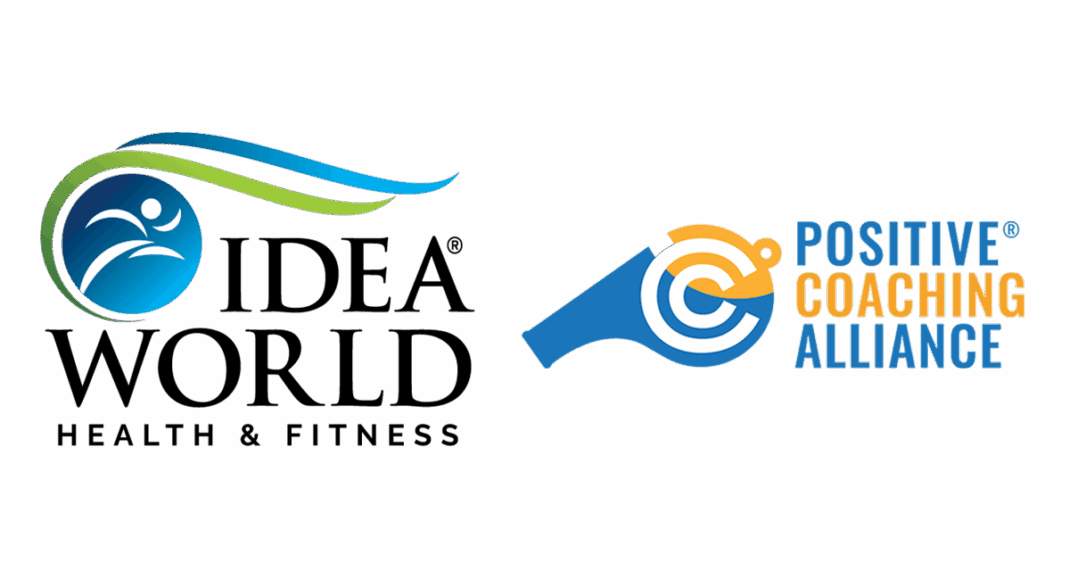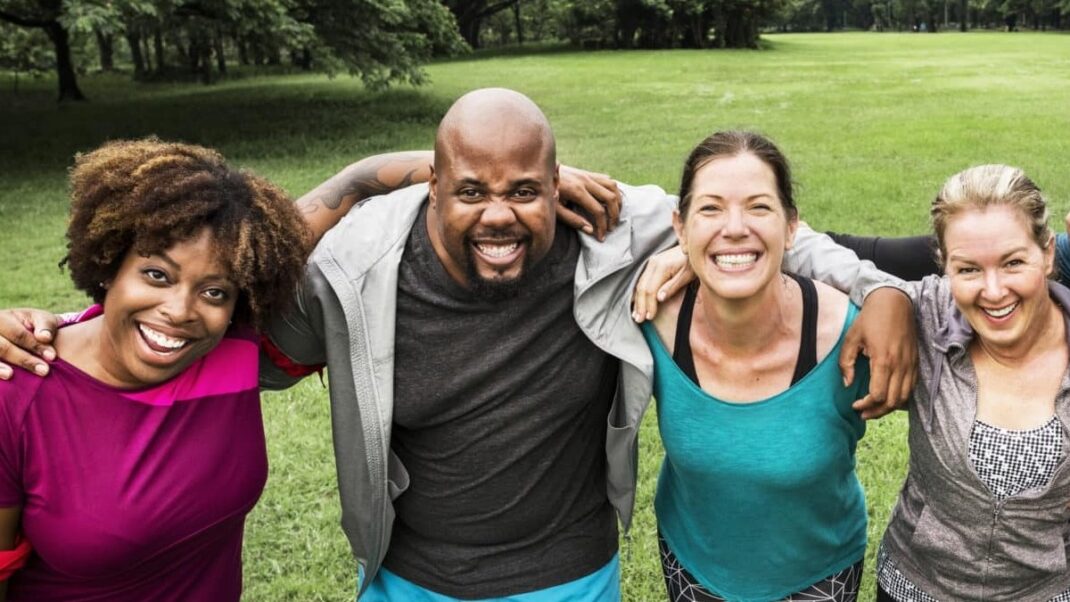Coaching Your Fitness Clients: Inside Out
Teach clients how to listen to their "inner family" and resolve disputes that get in the way of exercise.

You don't need me to tell you—the research is in! Exercise is a breakthrough medicine. In the long term, it enhances the health of our brains and bodies. It improves neuroplasticity and learning (Hotting & Roder 2013) and helps us avoid, delay or treat many health issues, both physical and mental (CDC 2017). What's more, we don't need research to tell us we feel good and perform well if we exercise—when we move our bodies with enthusiasm and vigor, we get calmer and clearer, our energy increases, and we are more productive. We may even glean creative ideas as our minds wander during exercise.
Yet, even with the overwhelmingly positive short‐ and long‐term benefits of exercise, around 50% of people never quite make it a consistent habit (CDC 2017). Good intentions abound, yet the inner dialogue, or self‐talk, reveals ongoing disagreements among an inner family with competing interests. While one voice may say, Let's get moving and get fitter, so I'll be healthier, other voices drown it out. One may say, I am too busy, while another says, It's boring, and a third says, I'm too tired. The inner decisional balance is weighted toward a no‐go decision on exercise, even in the face of its amazing benefits.
How can we help people sort through the inner conflicts that keep them on the proverbial fence? The phenomenon of the mind's inner family of separate, unique characters was brought to life as the inner world of 11‐year‐old Riley, portrayed in the Oscar‐winning Pixar movie Inside Out. There may be at least nine characters to tune into, each with a distinct life force speaking through its voice and emotions (Moore 2013; Moore, Phillips & Hanc 2016). Whether you experience your mind as multiple or not, these life forces are well‐grounded in science as important aspects of
the human psyche, likely evolved from basic needs for survival, growth and actualization.
Having an inner family, with inherently competing interests and needs, is natural and normal. And while inner debates and conflicts make the experience of being human a messy affair—for all of us!—effective negotiation and collaboration are possible, as we'll find out.
Introducing Rebecca
Let's meet "Rebecca's" inner family. Rebecca is a composite of some of my clients. We will invite her nine family members to share their different perspectives on exercise, while we observe from the vantage point of the Mindful Self—the part of the mind, or mental state of meta‐awareness (Vago & Silbersweig 2012), that can stand back and listen without judgment.
You'll see behind the curtain of Rebecca's ambivalence and discover that some inner family members already want to exercise, while others have different priorities. Fortunately, the potential to move past ambivalence and get the whole inner family on board is within reach.
Now it's time to introduce Rebecca's nine characters; the emojis are depictions of my own inner family to help you better imagine and appreciate the conflicting agendas.
The Executive Manager
First let's connect with the Executive Manager, the inner organizer and self‐regulator in charge of planning, scheduling, managing the to‐do list, and keeping the inner team on time and on track. Often overwhelmed by Rebecca's overstuffed life, her Executive Manager is chronically exhausted: The last thing I need is to add another priority to the to‐do list. I'm already way too tired when I hear the wake‐up alarm. Plus, I'd much prefer some time for deeper thinking about work projects. At the end of an exhausting day, I bag exercise so I can do some more work after dinner.
The Standard Setter
The next voice to tune into is the Standard Setter, responsible for performance and achievement, for setting ambitious goals and getting us there. This is the life force related to self‐esteem: Am I fill-in-the-blank enough? it asks. It tracks external standards, making sure we fit in and gain respect and validation from others. This family member can be a hard taskmaster, a tough (inner and outer) critic. Rebecca's Standard Setter is annoyed at the state of affairs: Many of our friends are exercising 5 days a week, so what's wrong with us! C'mon, let's get with the program! Quit the excuses, you lazy . . . !
Autonomy
Next up is Autonomy, captain of the human ship, as we learned from Ed Deci and Rich Ryan, who developed self‐determination theory. Autonomy wants to see us marching to our own drummer, authentic and free to make choices that serve our values, interests and preferences. The master of self‐interest, Autonomy is prone to rebelling against others, inside and out, particularly those who don't "get us," who don't share our values or who tell us what to do. Rebecca's Autonomy is rebelling under the pushy voice of her Standard Setter, along with the preachy voices of friends who are fitness nuts: I'm just not a natural exerciser like them, says Autonomy. I don't like intensive cardio exercise—it's not for me. Back to the couch to watch a movie or read a book. It's time to do something I choose for a change.
Confidence
Now on to Confidence, which is dedicated to being strong and competent. The internal assessment of competence, our knowledge and skills related to a particular activity, can be a source of inner turmoil. You can do it, says the Standard Setter. No, I can't, says Confidence. For Rebecca, Confidence is not happy at all with the impossible goals set by the Standard Setter, and as such is aligned with Autonomy. Confidence is full of self‐doubt with respect to exercise: We haven't been exercising much for years. We simply don't have the ability to re‐engineer work and family life to fit it in. Forget about it!
The Body Regulator
Next up is Rebecca's Body Regulator, the life force that's all about fitness, health and balance. The Body Regulator has this whole exercise thing figured out, if only someone would listen to its body intelligence (Gavin & Moore 2010): Start slowly by walking for a few months, then alternate walking with jogging; even 15 minutes a day would be a great step forward. The Standard Setter is preaching and pushing. Autonomy is rebelling. Confidence feels defeated. In the midst of all this, the Body Regulator is frustrated that it can't make its voice heard: If the Standard Setter just lowered the bar to what is reasonable, and we picked something Autonomy wanted to do, Confidence would be onboard and we'd get off this couch and start moving!
The Adventurer
Enter the Adventurer, who loves novelty, change and adventure, tuning into possibilities with an open mind. With an ever‐ready supply of curious energy, the Adventurer is a vital source of resilience when things don't go well, helping us recover and adapt quickly. Curiosity peaks at age 30 and declines, and significant decline is an early sign of Alzheimer's disease (Daffner et al. 1999). A curious sense of adventure can be hugely valuable to Rebecca when she is sitting on the fencepost vis‐à‐vis exercise: Let's get curious about our inner assumptions here. What is there to learn? For example, perhaps my Executive Manager would have more mental energy and be more productive if we exercised regularly?
The Relational Life Force
Let's now check in with the Relational family member, who lives to serve others, in fact to put others first, ahead of our interests. The Relational life force wants to nurture, love, and give care. It wants good relationships and teamwork, inside and out: I like the curious Adventurer's ideas, it says. An upgrade in inner relationships is also needed—more respect and listening, more collaboration. Maybe we could even find a role model who navigated out of this stuck place and would have a few tips to share.
The Creative Life Force
Now we meet the Creative Life Force, which loves fun and pleasure, particularly the pleasure of being creative and generative. The thing is, for Rebecca, its fun, creative nature gets indulged in baking homemade chocolate chip cookies, which taste great but aren't a great health habit (easy to sneak the cookies when her Executive Manager is too tired to self‐regulate!). Rebecca has never consulted her Creative for help with the exercise dilemma, and yet Creative could offer new ideas: I'm sure I could help the Executive Manager better use creativity for work projects instead of for baking cookies. We would probably have more creative work ideas if I got recharged from exercise.
The Meaning Maker
Last is the Meaning Maker. This life force stands back to make sense of our circumstances. It tunes into what things mean and what purpose they serve, zooming into a small moment or zooming out to consider the meaning of larger life experiences. The Meaning Maker is the inner coach, listening to all perspectives and nudging us to tune into the wisdom that applies in this moment. Let's see what that wisdom might be for Rebecca:
- Adventurer can help us be curious and open‐minded rather than stuck, allowing us to see new opportunities and get excited and energized about new experiments.
- Executive Manager can get some help from Creative in finding ways to delegate a few things, so it's possible for us to schedule four 15‐minute walks in the next week.
- Standard Setter can cheer on the inner team and set aside its pressure and harsh criticism this week (it's just an experiment, remember).
- Autonomy is up for walking as long as we swing past the smoothie bar once a week.
- Confidence feels good about the walking goal—I can do that!
- Body Regulator is delighted to share its wisdom on starting an exercise program that fits with the needs of Confidence and the Executive Manager. That's a new experience!
- Creative Life Force is looking forward to unleashing the mind to wander while walking; maybe some new ideas will arrive.
- Relational Life Force feels better about the decrease in inner conflict and will keep an eye open for other people to help as role models, mentors or walking buddies.
- Meaning Maker shares its gratitude for the hard work and good intentions of all members of the inner family. We are a great team when we respect and listen to each other. Collaboration will lead to more exercise, followed by more energy to make a bigger impact in the world.
Reaching Resolution and Finding Resolve
Rebecca has landed in a good place. She has gained self‐awareness and now understands the forces that led to her ambivalence about exercising.
When we experience our minds as a family of independent and valuable perspectives, we find clarity in the confusion and can reframe challenges as resources. Best of all, we find wisdom instead of just conflict. Our emotions aren't simply annoying and distracting; they each have a messenger behind them with a message that is valuable to hear.
Time to go for a walk.
EMOJI ILLUSTRATIONS BY KEN KELLEHER.
References
CDC (Centers for Disease Control and Prevention). 2017. Physical activity basics. Accessed Dec. 1, 2016. www.cdc.gov/physicalactivity/basics/index.htm
Daffner, K.R., et al. 1999. Mechanisms underlying diminished novelty‐seeking behavior in patients with probable Alzheimer's disease. Neuropsychiatry, Neuropsychology, & Behavioral Neurology, 12 (1), 58-66.
Gavin, J., & Moore, M. 2010. Body intelligence: A guide to self‐attunement. IDEA Fitness Journal, 7 (11).
Hotting, K., & Roder, B. 2013. Beneficial effects of physical exercise on neuroplasticity and cognition. Neuroscience and Biobehavioral Reviews, 37, 2243-57.
Moore, M. 2013. Coaching the multiplicity of mind: A strengths‐based model. Global Advances in Health and Medicine, 2 (4).
Moore, M., Phillips, E., & Hanc, J. 2016. Organize Your Emotions, Optimize Your Life. Harvard Health Publications. New York: William Morrow. Self‐Determination Theory website: www.selfdeterminationtheory.org.
Vago, D., & Silbersweig, D. 2012. Self‐awareness, self‐regulation, and self‐transcendence (S‐ART): A framework for understanding the neurobiological mechanisms of mindfulness. Frontiers in Human Neuroscience, 6 (296), 1–30.
Margaret Moore, MBA
Margaret Moore, MBA, is the founder of Wellcoaches Corporation and a co-founder of the Coaching Psychology Institute at McLean/Harvard Medical School. Margaret holds a bachelorÔÇÖs degree in biology and has spent approximately 17 years in the biotech industry.





